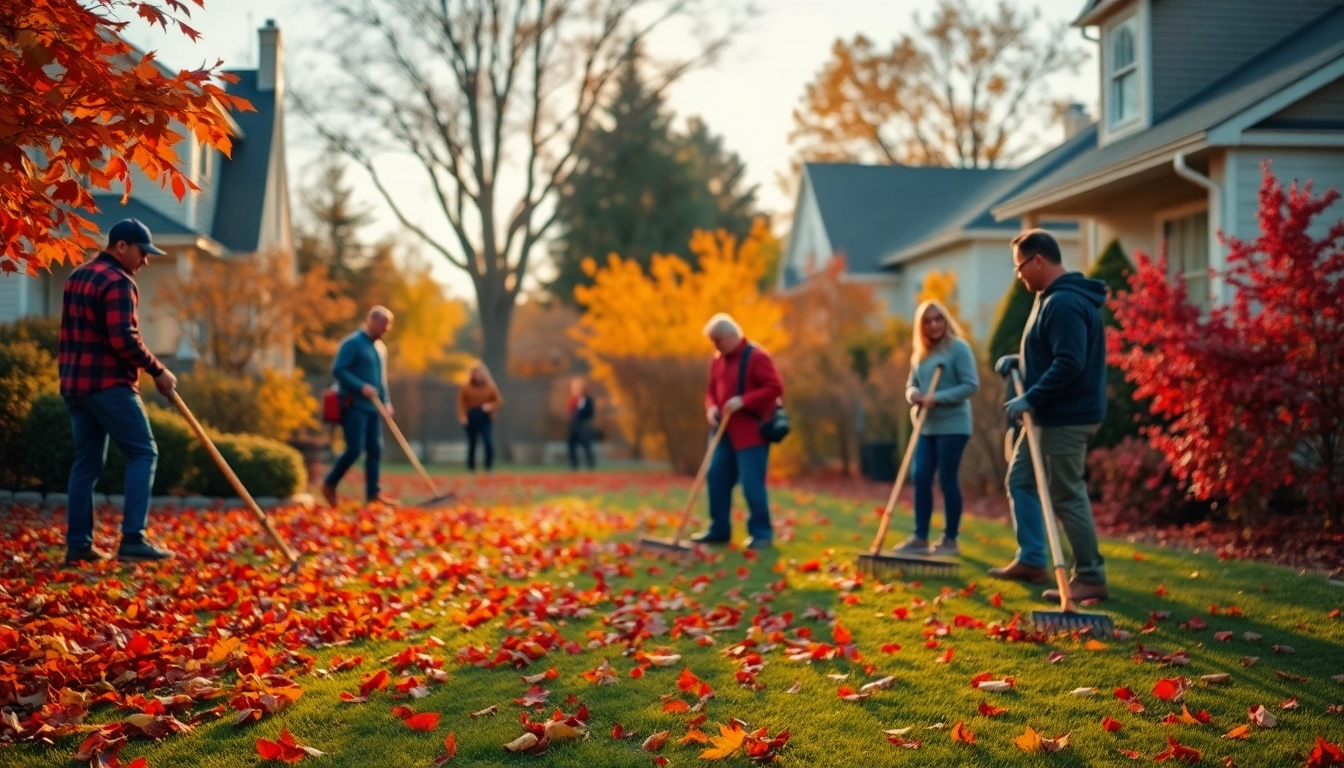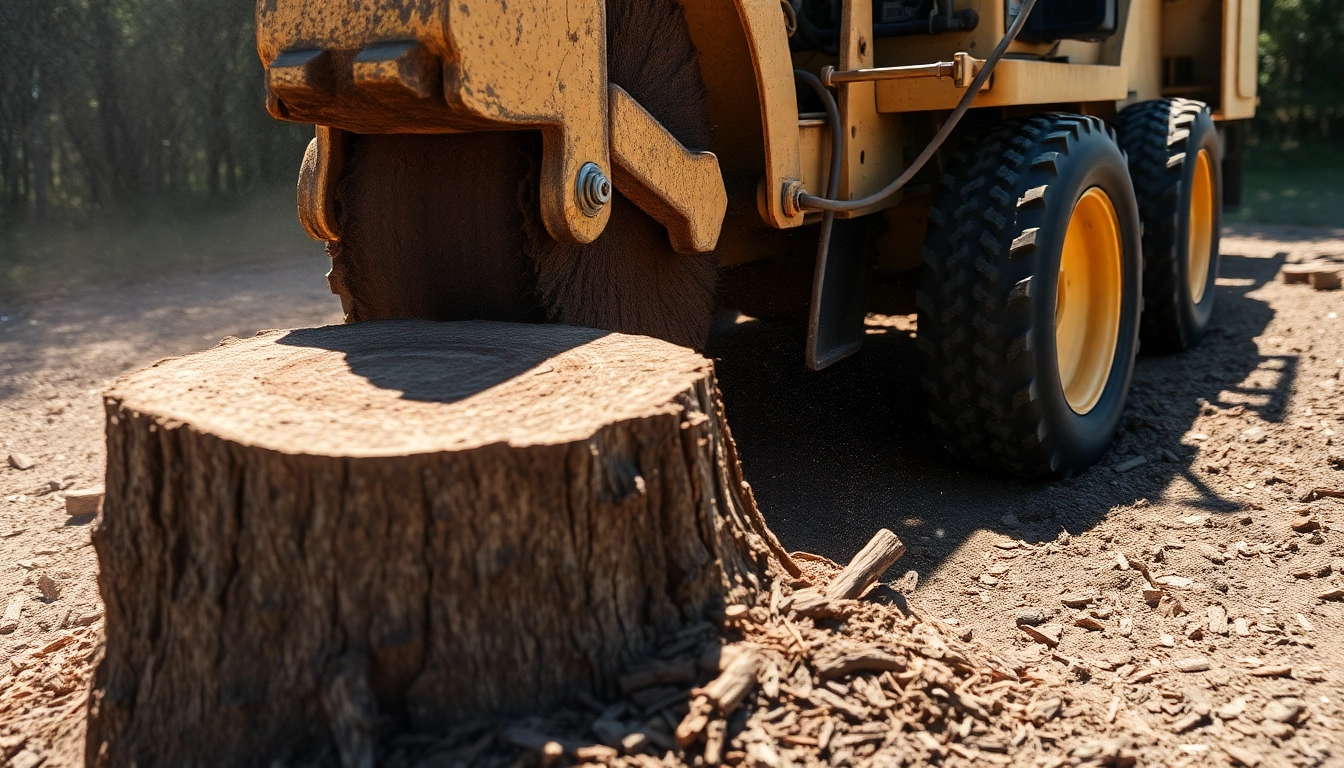Introduction to Fall Clean Up
As the vibrant hues of summer fade and the chill of autumn returns, property owners everywhere face the essential task of fall clean up. This process is more than just a simple cleaning; it’s a vital part of maintaining the health and aesthetics of your outdoor spaces. Understanding what fall clean up entails and its importance can set the stage for a thriving lawn and garden come springtime.
What is Fall Clean Up?
Fall clean up refers to the series of maintenance tasks performed in the autumn to prepare your lawn and garden for winter. This includes removing fallen leaves, debris, and annual plants, as well as trimming perennial plants and shrubs. The primary goal is to promote a healthier ecosystem for your garden and ensure that your lawn survives the winter months without unnecessary stress.
Importance of Seasonal Yard Maintenance
Regular seasonal yard maintenance is crucial for several reasons:
- Health of the Lawn: Removing leaves and debris prevents the buildup of mold and diseases that can thrive in damp, covered areas.
- Aesthetics: A well-maintained yard adds curb appeal and enhances the overall look of your property.
- Preparation for Winter: Proper clean up helps plants conserve energy and resources they would otherwise waste trying to stay alive during harsh winter conditions.
- Better Spring Growth: By preparing your lawn for winter, you boost its chances of a robust and healthy re-emergence in the spring.
Common Fall Clean Up Challenges
Many homeowners face challenges during fall clean up, including:
- Volume of Debris: The sheer amount of leaves and debris can be overwhelming, especially for those with large trees or expansive lawns.
- Time Constraints: With busy schedules, finding time to clean up can be tough.
- Weather Conditions: Autumn weather can be unpredictable, making it challenging to schedule clean up days.
- Equipment Needs: Not everyone has the necessary tools for efficient clean up, which can lead to incomplete jobs.
Preparing for Your Fall Clean Up
Essential Tools and Supplies for Fall Clean Up
Before diving into fall clean up, you need the right tools. Here’s a list of essential items:
- Rakes: A wide rake is perfect for gathering leaves, while a hand rake can be handy for tight spots.
- Leaf Blower: An electric or gas-powered leaf blower makes clearing leaves more efficient.
- Trash Bags or Containers: Ensure you have durable bags or containers for collecting debris.
- Handsaw or Pruners: For trimming back shrubs and perennials, these tools will be invaluable.
- Gloves: Protect your hands from thorns and debris with a good pair of gardening gloves.
- Hoses and Sprayers: If you need to water your garden post-clean up or apply any treatments.
Creating a Fall Clean Up Checklist
A checklist can streamline the fall clean up process. Consider including these tasks:
- Remove fallen leaves from the lawn, flower beds, and pathways.
- Trim back perennials and foliage that have finished flowering.
- Clear debris from gutters and downspouts.
- Evaluate your lawn and plant health for any signs of pests or diseases.
- Prepare your equipment for winter storage.
- Consider soil testing to address nutrient deficiencies.
Timing Your Fall Clean Up: Best Practices
The timing of your fall clean up can impact its effectiveness. Here are some best practices:
- Start Early: Begin your clean up in mid to late autumn, ideally before the first heavy frost.
- Monitor Leaf Drop: Clean up should coincide with peak leaf drop to minimize work.
- Regular Maintenance: Instead of waiting until the end of the season, consider regular intervals of clean up as leaves fall.
- Post-Weather Check: Assess the weather to avoid clean up during rain or wind that can make the task harder.
Step-by-Step Guide to Fall Clean Up
Leaf Removal Techniques
Removing leaves is perhaps the most critical component of fall clean up. Here are some effective techniques:
- Manual Raking: On a calm day, use your rake to gather leaves from your lawn. Rake in rows for easier pick-up.
- Leaf Blowing: Using a leaf blower can expedite the process, especially in large areas. Aim for dry leaves for the best results.
- Mulching: Instead of removing leaves entirely, garden mulchers can shred leaves to less than an inch in size, allowing them to decompose into the soil as a nutrient source.
- Composting: Collect leaves to create compost or use them as mulch to add organic matter to your soil.
Cleaning Lawn and Garden Beds
Cleansing your garden beds not only enhances appearance but also promotes health. Follow these steps:
- Pull Weeds: Remove weeds before they go to seed to minimize future growth complaints.
- Remove Dead Plants: Clear out any annual plants that have died off, as well as any debris that may harbor pests.
- Loosen Soil: Gently turning the soil can aerate the ground and prepare it for upcoming winter moisture absorption.
- Plant Bulbs: Fall is an ideal time to plant spring-blooming bulbs, which can be done after the clean up is completed.
Trimming and Pruning Plants
Proper pruning is essential for plant health. Here’s how to approach it:
- Identify Deadwood: Look for branches that are dead or diseased and remove them first.
- Shape Your Plants: Trim overgrown branches to shape bushes and trees, allowing air circulation which prevents mold.
- Timing: Prune trees and shrubs just before the winter or during dormancy to facilitate healthier spring growth.
Hiring Professionals for Fall Clean Up
When to Consider Hiring Help
While many homeowners may tackle fall clean up themselves, there are instances when it makes sense to hire professionals:
- Large Properties: Bigger lawns or extensive gardens may require assistance due to the sheer scale of work involved.
- Lack of Time: Busy schedules can make it difficult to dedicate adequate time for yard work.
- Physical Limitations: Those with physical limitations or the elderly may prefer to hire professionals to avoid injury.
- Expertise Needed: If there are special considerations, like unique plants that require specific care, professionals can ensure best practices.
What to Look for in a Fall Clean Up Service
Finding the right service can make all the difference. Keep these factors in mind:
- Reputation: Check reviews and testimonials for feedback on the company’s performance.
- Insurance and Certifications: Verify that the service has the appropriate licenses and insurance to protect your property.
- Services Offered: Make sure they provide a comprehensive range of services that fit your specific needs.
- Pricing: Get estimates from multiple services before deciding and understand what is included in their quotes.
Comparing Costs: DIY vs. Professional Services
Deciding between DIY clean up or hiring professionals involves weighing costs:
- DIY Costs: Initial investments in gardening tools and supplies may be required, yet it could save you on labor costs.
- Time Investment: Compare the time you would spend vs. the cost of hiring someone else to do it.
- Professional Pricing: Depending on the size of your property, hiring a service could range from $200 to upwards of $500, depending on the complexity of tasks.
Maintaining Your Lawn Post-Fall Clean Up
Winter Preparation for a Healthy Lawn
Following your fall clean up, prepare your lawn for winter:
- Fertilization: Apply a winter fertilizer to help your grass store nutrients for months ahead.
- Watering Needs: Ensure your lawn is adequately hydrated before freeze sets in but avoid overwatering.
- Seed Selection: Use winter rye or similar seeds to establish a green cover in bare areas.
Ongoing Care Through Winter Months
Even in winter, some care is still needed:
- Monitor Snow Build-Up: Remove snow piles from the lawn to prevent mold and damage to the grass beneath.
- Ice Management: Treat frozen areas with sand or salt to maintain safety, but limit usage to protect the lawn.
Preparing for Spring: What Comes Next?
As winter eases into spring, having an eye toward what’s next is crucial:
- Early Spring Cleaning: Prepare for another round of clean up as the snow melts, including removing any accumulated debris.
- Soil Testing: Conduct tests to assess nutrient levels and consider adjusting the fertilization plan.
- Planting Schedule: Prepare your planting schedule based on your local climate to ensure optimal growth.



